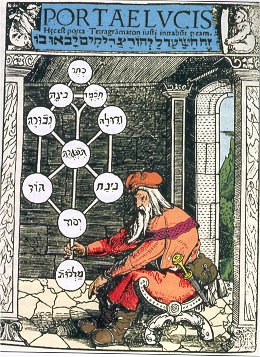|
Spiritual Energy
Proponents and practitioners of various esoteric forms of spirituality and alternative medicine refer to a variety of claimed experiences and phenomena as being due to "energy" or "force" that defy measurement and thus are distinguished from the scientific form of energy. Claims related to energy therapies are most often anecdotal, rather than being based on repeatable empirical evidence. There is no scientific evidence for the existence of such energy, and physics educators criticize the use of the term "energy" to describe the ideas as potentially confusing. History Concepts such as "life force", "'' qi''" and "'' élan vital''" existed from antiquity. In the 18th century, Franz Mesmer ignited debate with his theory of animal magnetism. Attention to vitalism grew in the 18th and 19th centuries. Interest continued into the 20th century, largely fuelled by adherents of the New Age movement. As biologists studied embryology and developmental biology, particularly before the ... [...More Info...] [...Related Items...] OR: [Wikipedia] [Google] [Baidu] |
Esoteric
Western esotericism, also known as esotericism, esoterism, and sometimes the Western mystery tradition, is a term scholars use to categorise a wide range of loosely related ideas and movements that developed within Western society. These ideas and currents are united since they are largely distinct both from orthodox Judeo-Christian religion and Enlightenment rationalism. Esotericism has pervaded various forms of Western philosophy, religion, pseudoscience, art, literature, and music—and continues to influence intellectual ideas and popular culture. The idea of grouping a wide range of Western traditions and philosophies together under the term ''esotericism'' developed in Europe during the late seventeenth century. Various academics have debated various definitions of Western esotericism. One view adopts a definition from certain esotericist schools of thought themselves, treating "esotericism" as a perennial hidden inner tradition. A second perspective sees esotericism a ... [...More Info...] [...Related Items...] OR: [Wikipedia] [Google] [Baidu] |
Brian Dunning (author)
Brian Andrew Dunning (born 1965) is an American writer and producer who focuses on science and skepticism. He has hosted a weekly podcast, ''Skeptoid'', since 2006, and he is an author of a series of books on the subject of scientific skepticism, some of which are based on the podcast. ''Skeptoid'' has been the recipient of several podcast awards such as the Parsec Award. Dunning has also created the ''Skeptoid.org'' spin-off video series, ''inFact'', and ''The Feeding Tube'' both available on YouTube. Dunning has produced two educational films on the subject of critical thinking: ''Here Be Dragons'' in 2008, and ''Principles of Curiosity'' in 2017. Dunning co-founded Buylink, a business-to-business service provider, in 1996, and served at the company until 2002. He later became eBay's second biggest affiliate marketer; he has since been convicted of wire fraud through a cookie stuffing scheme. In August 2014, he was sentenced to 15 months in prison, followed by three year ... [...More Info...] [...Related Items...] OR: [Wikipedia] [Google] [Baidu] |
Sacred Natural Site
A sacred natural site is a natural feature or a large area of land or water having special Spirituality, spiritual significance to peoples and communities. Sacred natural sites consist of all types of natural features including mountains, hills, forests, Sacred grove, groves, Tree worship, trees, rivers, lakes, lagoons, caves, islands and springs. Overview Sacred natural sites are natural features in or areas of land or water having special spiritual significance to peoples and communities. This working definition is broad and can be used as a basis for more specific articulations. Whilst “sacred natural sites” is the main term used, for reasons of variety and readability, other terms are used interchangeably, including sacred site, sacred place and sacred area. One interest in sacred natural sites from the perspective of nature conservation can lie in the components of biological diversity that they harbour, such as the species of animals and plants, the habitats and ecosyste ... [...More Info...] [...Related Items...] OR: [Wikipedia] [Google] [Baidu] |
Meridian (Chinese Medicine)
The meridian system (, also called channel network) is a concept in traditional Chinese medicine (TCM). Meridians are paths through which the life-energy known as " qi" (''ch'i'') flows. Meridians are not real anatomical structures: scientists have found no evidence that supports their existence. One historian of medicine in China says that the term is "completely unsuitable and misguided, but nonetheless it has become a standard translation." Major proponents of their existence have not come to any consensus as to how they might work or be tested in a scientific context. History The concept of meridians are first attested in two works recovered from the Mawangdui and Zhangjiashan tombs of the Han-era Changsha Kingdom, the ''Cauterization Canon of the Eleven Foot and Arm Channels'' ''Zúbì Shíyī Mài Jiǔjīng'') and the ''Cauterization Canon of the Eleven Yin and Yang Channels'' ''Yīnyáng Shíyī Mài Jiǔjīng''). In the texts, the meridians are referenced as ''mài ... [...More Info...] [...Related Items...] OR: [Wikipedia] [Google] [Baidu] |
Acupuncture
Acupuncture is a form of alternative medicine and a component of traditional Chinese medicine (TCM) in which thin needles are inserted into the body. Acupuncture is a pseudoscience; the theories and practices of TCM are not based on scientific knowledge, and it has been characterized as quackery. There is a range of acupuncture variants which originated in different philosophies, and techniques vary depending on the country in which it is performed, but can be divided into two main foundational philosophical applications and approaches, the first being the modern standardized form called eight principles TCM and the second an older system that is based on the ancient Daoist '' wuxing'', better known as the five elements or phases in the West. Acupuncture is most often used to attempt pain relief, though acupuncturists say that it can also be used for a wide range of other conditions. Acupuncture is generally used only in combination with other forms of treatment. The glob ... [...More Info...] [...Related Items...] OR: [Wikipedia] [Google] [Baidu] |
Geomancy
Geomancy (Greek: γεωμαντεία, "earth divination") is a method of divination that interprets markings on the ground or the patterns formed by tossed handfuls of soil, rocks, or sand. The most prevalent form of divinatory geomancy involves interpreting a series of 16 figures formed by a randomized process that involves recursion, followed by analyzing them, often augmented with astrological interpretations. Geomancy was practiced by people from all social classes. It was one of the most popular forms of divination throughout Africa and Europe, particularly during the Middle Ages and the Renaissance. In Renaissance magic, geomancy was classified as one of the seven "forbidden arts", along with necromancy, hydromancy, aeromancy, pyromancy, chiromancy (palmistry), and spatulamancy (scapulimancy). History The word "geomancy", from Late Greek ''geōmanteía'', translates literally to "foresight by earth"; it is a calque translation of the Arabic term ''‛ilm al-r ... [...More Info...] [...Related Items...] OR: [Wikipedia] [Google] [Baidu] |
Awkwardness
Embarrassment or awkwardness is an emotional state that is associated with mild to severe levels of discomfort, and which is usually experienced when someone commits (or thinks of) a socially unacceptable or frowned-upon act that is witnessed by or revealed to others. Frequently grouped with shame and guilt, embarrassment is considered a “ self-conscious emotion,” and it can have a profoundly negative impact on a person’s thoughts or behavior. Usually, some perception of loss of honor or dignity (or other high-value ideals) is involved, but the embarrassment level and the type depends on the situation. Causes Embarrassment can be personal, caused by unwanted attention to private matters or personal flaws or mishaps or shyness. Some causes of embarrassment stem from personal actions, such as being caught in a lie or in making a mistake. In many cultures, being seen nude or inappropriately dressed is a particularly stressful form of embarrassment (see modesty). Personal ... [...More Info...] [...Related Items...] OR: [Wikipedia] [Google] [Baidu] |
Social Anxiety
Social anxiety is the anxiety and fear specifically linked to being in social settings (i.e., interacting with others). Some categories of disorders associated with social anxiety include anxiety disorders, mood disorders, autism spectrum disorders, eating disorders, and substance use disorders. Individuals with higher levels of social anxiety often avert their gazes, show fewer facial expressions, and show difficulty with initiating and maintaining a conversation. Social anxiety commonly manifests itself in the teenage years and can be persistent throughout life, however, people who experience problems in their daily functioning for an extended period of time can develop social anxiety disorder. Trait social anxiety, the stable tendency to experience this anxiety, can be distinguished from state anxiety, the momentary response to a particular social stimulus. Half of the individuals with any social fears meet the criteria for social anxiety disorder. Age, culture, and gender ... [...More Info...] [...Related Items...] OR: [Wikipedia] [Google] [Baidu] |
Fear
Fear is an intensely unpleasant emotion in response to perceiving or recognizing a danger or threat. Fear causes physiological changes that may produce behavioral reactions such as mounting an aggressive response or fleeing the threat. Fear in human beings may occur in response to a certain stimulus occurring in the present, or in anticipation or expectation of a future threat perceived as a risk to oneself. The fear response arises from the perception of danger leading to confrontation with or escape from/avoiding the threat (also known as the fight-or-flight response), which in extreme cases of fear ( horror and terror) can be a freeze response or paralysis. In humans and other animals, fear is modulated by the process of cognition and learning. Thus, fear is judged as rational or appropriate and irrational or inappropriate. An irrational fear is called a phobia. Fear is closely related to the emotion anxiety, which occurs as the result of threats that are percei ... [...More Info...] [...Related Items...] OR: [Wikipedia] [Google] [Baidu] |
Mood (psychology)
In psychology, a mood is an affective state. In contrast to emotions or feelings, moods are less specific, less intense and less likely to be provoked or instantiated by a particular stimulus or event. Moods are typically described as having either a positive or negative valence. In other words, people usually talk about being in a good mood or a bad mood. There are many different factors that influence mood, and these can lead to positive or negative effects on mood. Mood also differs from temperament or personality traits which are even longer-lasting. Nevertheless, personality traits such as optimism and neuroticism predispose certain types of moods. Long term disturbances of mood such as clinical depression and bipolar disorder are considered mood disorders. Mood is an internal, subjective state but it often can be inferred from posture and other behaviors. "We can be sent into a mood by an unexpected event, from the happiness of seeing an old friend to the anger of di ... [...More Info...] [...Related Items...] OR: [Wikipedia] [Google] [Baidu] |
Chinese Martial Arts
Chinese martial arts, often called by the umbrella terms kung fu (; ), kuoshu () or wushu (), are multiple fighting styles that have developed over the centuries in Greater China. These fighting styles are often classified according to common traits, identified as "families" of martial arts. Examples of such traits include ''Shaolinquan'' () physical exercises involving All Other Animals () mimicry or training methods inspired by Old Chinese philosophies, religions and legends. Styles that focus on qi manipulation are called '' internal'' (; ), while others that concentrate on improving muscle and cardiovascular fitness are called '' external'' (; ). Geographical association, as in ''northern'' (; ) and ''southern'' (; ), is another popular classification method. Terminology ''Kung fu'' and ''wushu'' are loanwords from Cantonese and Mandarin respectively that, in English, are used to refer to Chinese martial arts. However, the Chinese terms '' kung fu'' and ''wushu'' (; ... [...More Info...] [...Related Items...] OR: [Wikipedia] [Google] [Baidu] |






.jpg)